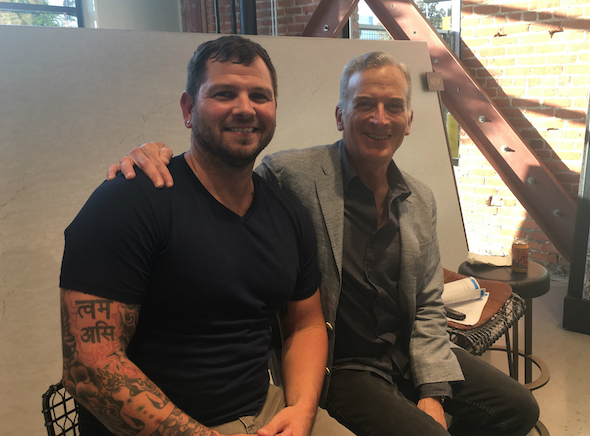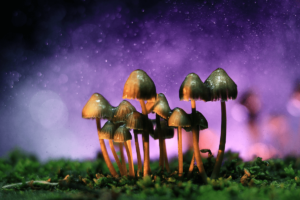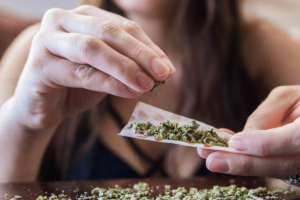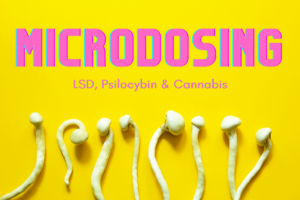HelloMD’s Chief Medical Officer Perry Solomon, M.D., hosted another educational event in San Francisco with Level co-founder Chris Emerson. This time, Chris spoke on the topic of microdosing cannabis.
Chris, who’s also Level’s chief scientist, holds a Ph.D. in small molecule chemistry. As he puts it, “A lot of people who get that training go and make drugs for Big Pharma. … I’ve always been fascinated by plant medicine. And so I had an experience seven years ago on a cannabis farm that changed the direction of my life and led me down this path of wanting to create a consistent, reliable, standardized dose of products for the cannabis market.
“Level’s about three years old now, and I think we’re doing a good job of trying to achieve that goal. We’ll keep iterating, moving forward. And we love partnering with HelloMD on these events, because we’re very aligned on how we approach our thoughts for what cannabis can be for people in health and wellness.”
FOLLOW US ON FACEBOOK & INSTAGRAM
When it comes to cannabis for health and wellness, more and more people are consuming the plant to improve their quality of life versus for recreationally purposes only. Says Dr. Solomon, “There are always going to be people who just want to get stoned, who just want to get high.
“However, we try to promote cannabis as an alternative to pharmaceutical drugs—to alcohol in most cases, and obviously to opioids. We see people using cannabis for everything from migraines to insomnia and obviously, number one, for pain.”
And so with this in mind, Dr. Solomon sat down with Chris to go over the benefits of cannabis especially when taken in small doses on a regular basis—that is, cannabis taken in microdoses. Here are just a few excerpts from their in-depth discussion.

Level’s Chris Emerson (left) with HelloMD’s Dr. Perry Solomon
What is microdosing when it comes to cannabis? And how does microdosing marijuana affect the human condition?
Chris Emerson: Microdosing is a concept of using a subtherapeutic dose over a certain timeframe to help some system come into equilibrium. A lot of times, when people talk about microdosing, that’s with psychedelic compounds. I think James Fadiman was the one who really came up with this regime of:
You take a compound for one day at a subtherapeutic dose, then you take two days off, then you repeat that cycle. So, in seven days, you’re dosing three times roughly. This works really well when you’re talking about very potent compounds where you need less than a milligram to have some physiological action.
In cannabis, microdosing is now used ubiquitously to talk about much lower dosing. So, instead of packing maybe a bowl full of flower using a vape cartridge, it’s using 1–3 milligrams of a subtherapeutic dose of cannabis. And so I think it’s important to define what we’re talking about from microdosing. Generally, the range that people talk about with microdosing is anything up to three milligrams or more.
The problem though with cannabis in general is that everyone’s needs are individual and unique. So what may be right for me, may not be right for you. Isn’t that right?
CE: Exactly. So I think the extreme cut off is five milligrams, but that can be a very heavy dose for a lot of people. So we at Level and a lot of other companies define it as being from 1–3 milligrams.
Honestly, it’s really hard to get microdosed products that are less than a milligram. So I think in the context of cannabis, when we talk about microdosing, it’s somewhere between 1–3 milligrams, potentially up to five.
RELATED: 3 POPULAR QUESTIONS ABOUT MARIJUANA & MICRODOSING ANSWERED
How does a microdose actually work? Are you supposed to feel something when you take a microdose of cannabis?
CE: I think in the traditional context of microdosing cannabis, it’s working in the background, so you don’t necessarily feel it physiologically, but you notice enhancement. Then, it’s like, “Oh, I can focus now,” or “I’m not getting tired,” or “I didn’t have anxiety today.” And because the plant produces 65-plus different cannabinoids, some of them are psychoactive, and most of them aren’t.
And so it’s an interesting question you ask. Yeah, maybe you take a milligram of THC (tetrahydrocannabinol), and you don’t feel this high from a physiological standpoint, but it helps you focus during your day or helps with your back pain if you’ve been sitting at a computer for 10 hours.
And so the really challenging thing, and I think what we’re trying to do here is answer: What is microdosing and what does it mean for cannabis?
If someone takes a high dose of THC, they feel it immediately. In a microdose though, they don’t really feel anything, so they don’t think it’s working. Do you have to take cannabis for a certain amount of time in the microdosed amount, before you actually realize that something may be happening? Or might they feel something?
CE: I definitely think they could feel something. I can take small doses of cannabis. Not necessarily delta-9 THC, but maybe CBD (cannabidiol) as an example. I can take 1–3 milligrams. I may not feel physiologically in effect; I don’t feel tingling or maybe I don’t feel tension relief in my shoulders, but mentally and emotionally there’s a difference. So because everyone is interacting differently with cannabis, it’s part of this journey of what cannabis actually is: an exploration and definition.
Are there other cannabinoids that you can microdose as well? In other words, other than CBD and THC?
CE: Yes, absolutely. Any of them, as long as you can find products that allow you to do that. So whether it’s a tea or a tincture or tablets or powder, you need something that’s standardized in dosage.
If someone were to have pain, and they needed to take a lot of THC to quell that pain, would they be able to microdose and still get the type of relief they need over a period of time?
CE: Potentially, they could. It’s really hard to say, because right now, the way I view it is most people are really overdosing in the amount of cannabis we need. Most products are these much higher-dose products.
And so people really haven’t started to explore how much cannabis do I actually need and what is my dosing regime over a certain given amount of time. And so it makes it challenging because there are a lot of different factors that play into how effective the cannabis is or will be.
The fat you’ve consumed makes a difference. Also, what’s my route of administration? What’s my metabolism like? How long does it take my body to actually metabolize and get rid of the active cannabinoid plus, am I using cannabinoids in concert?
And so, it makes it really challenging. It’s not a cut-and-dried, zero-one, this is the way we do it. Which is why we keep coming back to, you start low and go slow. You start with 1–3 milligrams, and then you can baseline yourself essentially off of a product and then say, “OK, I understand if I take three milligrams, I feel this way.”
And then you can really start to explore you. Maybe you introduce other cannabinoids, or you try a smaller dose to see if you get the same effect.
RELATED: INNOVATION SPOTLIGHT: LEVEL’S NEW CANNABIS TABLINGUALS
Let’s say there’s someone whose been using high doses of THC and CBD. What will happen if they switch immediately to a microdose? Will they feel anything, or do they have to wash the high doses of cannabis out of their system and then start slowly going to a microdose to get some type of effect or feeling?
CE: There’s lot of empirical evidence out there, and what people like to say is it’s seven to 10 days for your body to reset. … So, say you’re on a regimen of 100 milligrams of THC a day, but you really want to see if five milligrams two times a day is going to make a difference. You need a wash-out period.
Most likely, seven to 10 days is what a lot of people report will clear your system. Maybe it’s longer—up to 30 days, but that’s a good place to start. Then bring yourself back online and say, “Hey, I’m going to try with five milligrams in the morning and five at night.”
The other thing as well is that people react differently to cannabinoids because we have different expression levels of endocannabinoids in our bodies, so maybe it’s not just the delta-9 THCs. Maybe it’s the interaction with the other cannabinoids as well. So as you lower the dose of something, maybe you want to start over again and try some new cannabinoids, try some CBD in different ratios with the THC.
Lowering your dose is one of the challenging things that we talk about to a lot of people. This is a journey. This is a journey with a plant that people have been consuming for at least 10,000 years, probably a lot longer, and there’s going be some exploration with it.
But cannabis—if formulated properly and tested properly—should be a really a good experience, and the adverse effects that people may or may not have should be minimal. Maybe you get a little too high one time, so you go to sleep. Maybe you get a little paranoid and you wake up the next day, and say, “I’m cool; I’m fine, and now I know not to do that again.”
If you’re new to cannabis and want to learn more, take a look at our Cannabis 101 post. HelloMD can help you get your medical marijuana recommendation; it’s easy, private and 100% online.






